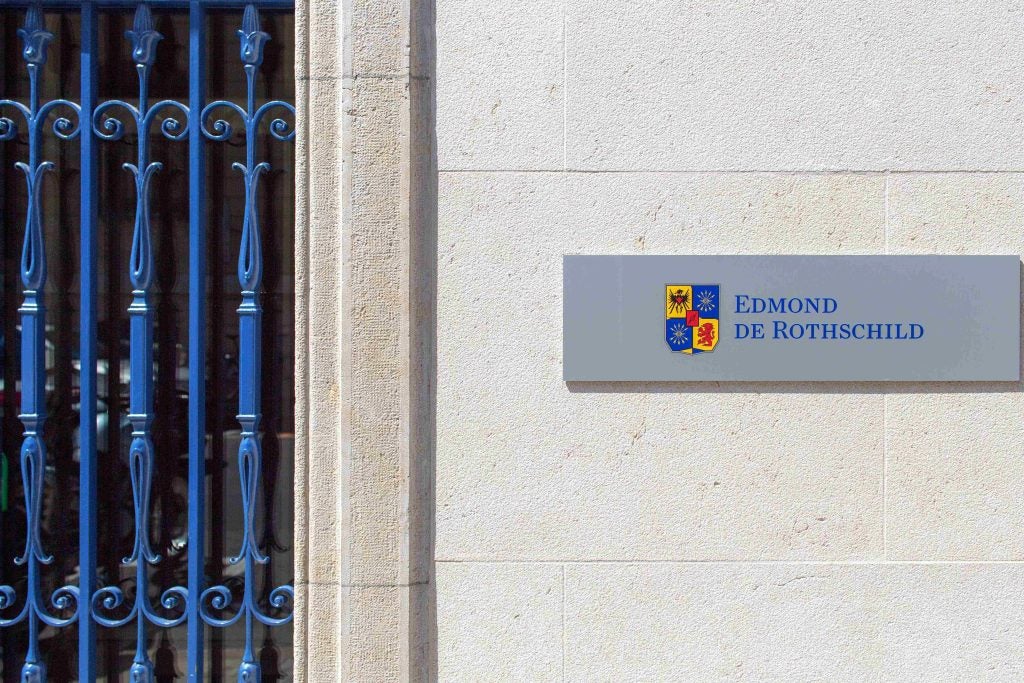
UniCredit private
banking head Helmut Bernkopf has strong ideas about how stricter
segmentation can help power the Italian bank to greater market
share. Nicholas Moody finds out about UniCredit’s ultra high net
worth initiative and why central and eastern Europe is where it
wants to be
UniCredit has a challenge
ahead. A well-known banking brand in Italy, Germany, Austria,
Poland and central and eastern Europe (CEE) – with many well-known
local subsidiaries – it has yet to convert this coverage to market
position in Europe.
Helmut Bernkopf, head of
Private Banking UniCredit, has been in the job since last August –
enough time for him to get a feel for the business and acknowledge
the scale of his challenge.
 “When you think about
“When you think about
private banking in Europe, UniCredit would probably not be the
first name that comes to mind. So we clearly have some work to do
there, to position UniCredit,” he says.
This is not to mention
the wider macroeconomic questions that have risen again about the
stability of Italy’s economy.
How well do you really know your competitors?
Access the most comprehensive Company Profiles on the market, powered by GlobalData. Save hours of research. Gain competitive edge.

Thank you!
Your download email will arrive shortly
Not ready to buy yet? Download a free sample
We are confident about the unique quality of our Company Profiles. However, we want you to make the most beneficial decision for your business, so we offer a free sample that you can download by submitting the below form
By GlobalDataBernkopf says as a truly
European bank it will always be exposed to the volatility of
Europe’s financial markets.
“The fundamentals of the
bank are good and the liquidity position is excellent. After the
successfully concluded €7.5bn ($9.95bn) capital increase, UniCredit
is one of Europe’s best capitalised banks. The high level of
participation during the offer period – 99.8% – is a strong proof
of trust and confidence of the markets in UniCredit.”
Strategic
strength
Bernkopf is eager to
emphasise the strategic importance placed on private banking within
the wider UniCredit Group.
In November last year,
the group released its four-pillar, five-year strategic plan. One
of the main pillars is to strengthen its balance sheet in line with
Basel III to achieve a common equity tier 1 above 10% in 2015.
Private banking is one of
the divisions singled out to make a key contribution – being a non
capital-intensive business that enhances liquidity, the bank
said.
“We have a very ambitious
business plan, which is that in all the markets that we operate we
want to grow faster than the market average,”he says.
“Total financial assets
are a very important figure for us, because this is the key
indicator along which we want to develop our business.
Historically, the private bank has always been very good at
managing costs, we are still highly profitable, but we have not
been able to grow faster than the market,” he says.
 Unicredits AUM suffers
Unicredits AUM suffers
Bernkopf is a UniCredit
stalwart having worked for the bank, or its subsidiaries, since
1994 in Austria, London, Romania and Russia.
His most recent role was
head of corporate and investment banking Austria for UniCredit
Group.
UniCredit, like many
other wealth managers, had mixed 2011 results.
Assets under management
(AuM) dropped to €41bn in 2011, from €43.1bn the year before, while
profits before tax increased 7.6% to €304m.
Total financial assets,
made up of deposits, assets under custody, AuM, and non-ordinary
assets also took a substantial hit, down 8.6% to €142bn.
Bernkopf says reduced
trading volumes had an impact on its revenues, a common industry
experience, although total revenues increased 10.3% in the fourth
quarter of 2011 on a year-on-year basis.
Bernkopf has several
ideas about how to drive the private bank’s revenue growth beyond
the average 2% to 3% market growth per year.
It starts by targeting
specific client groups, particularly ultra high net worth (UHNW)
and entrepreneurs, in partnership with its corporate and investment
banking division.
He also wants to see
slicker segmentation of its 230,000 clients, who each have assets
of more than €500,000.
Smarter
segmentation
A key strut of Bernkopf’s
strategy is building out its UHNW capability. This ultras unit is
starting from a low base, as currently less than 1% of UniCredit’s
230,000 clients have more than €10m in investable assets.
The new unit is being
piloted in UniCredit’s HypoVereinsbank (HVB) in Germany, which has
the highest density of UHNWs in Europe, with a focus on clients
with disposable assets of €20m and more.
In November, the private
banking division recruited the former global head of research and
UniCredit chief strategist Thorsten Weinelt with 12 staff and plans
to create dedicated UHNW units in Munich, Frankfurt and
Hamburg.
Maximising UHNW
links
This focus on building links
between the corporate and private wealth divisions at universal
banks is no new thing.
Many banks, including
Deutsche Bank and HSBC, have set about formalising the ways they
deal with this client group in recent years.
Last month, Société
Générale Private Banking launched a new offering for UHNW
entrepreneurs who have a holding company or a family office,
integrating the services of its investment and private banking
teams.
Deutsche Bank beefed up
collaboration between its CIB and wealth management arm through its
300-strong key client group last year. What makes UniCredit any
different?
“We have some of the best
corporate relationships with entrepreneurs and top companies
through our commercial banking activities,” argues Bernkopf.
“We have not yet fully
exploited those superior relationships for private wealth
management. We can not only provide the cash management and finance
the company – we also manage the private wealth of the entrepreneur
– this is our top priority,” he says.
Cost conscious
approach
The second-biggest
initiative is optimising the service models for the different
segments in private banking into lower wealth, middle and upper
bands.
In particular, UniCredit
is looking to develop its service models for customers with between
€500k and €2m to invest. To optimise this segment means continuing
its good cost management and using technology better.
 “We want to work different
“We want to work different
channels like internet and applications where we have additional
opportunities to interact with the customer and then the really
sophisticated advisory business starts from roughly €2m,” says
Bernkopf.
Being cost conscious is
an important metric for UniCredit – and one of the four pillars of
its 2015 strategic plan. Its cost-income ratio in 2011 was 61.1%, a
3% drop from 2010.
This focus on technology
is hoped to help maintain this low rate, significantly lower than
many rivals in developed countries, although it’s not the only
driver.
“You can not run private
banking anymore with one simple model of a private banker visiting
the customer and discussing investment alternatives. Sophisticated
clients want to monitor their portfolios; you have to link your
tools with the online market information. Some clients want access
to different information sources – that’s clearly a big area to
work on in the future,” he says.
Clients drive
technology innovation
UniCredit Private Banking
is also soon to expand the use of tablet computers to authorise
documents and connect with specialist advisers.
“In Italy we will launch
a tablet-based concept. Some banking processes are still quite
bureaucratic so you need lots of signatures to open accounts, and
this can be done very easily on the tablet,” he says.
“To give you another
example: If we see an interest from a client in a corporate bond
fund, you can bring in a fund manager on the tablet screen – so a
customer can connect and see the fund manager on the screen,”
Bernkopf adds.
“These kinds of things
are being expected by more and more clients now,” says
Bernkopf.
“This move towards more
technology is not just driven by cost management; it is much more
driven by client needs. They want to understand better, touch and
feel what they are buying. It is a much different feeling if you
know the asset manager, see the picture and he or she explains it,
than a piece of paper. That is the way we are going,” he adds.
Near, not Far,
East expansion
Since arriving in August,
Bernkopf has a clear idea of where the UniCredit footprint will
develop. For him, the bank’s focus is the ‘near east’ and onshore,
rather than the Far East and offshore.
“The group was very
expansion driven until 2006-7, then the crisis came along and
everything since didn’t allow us to continue this expansion in the
same way as before.
“We have not excluded
that we can grow by acquisition in markets where we are already
established and we want to improve our market position, but
currently we have no concrete plans whatsoever,” he says.
UniCredit sold its Swiss
and San Marino businesses in 2008-9, due to a lack of size in those
markets and the regulatory pressures that made offshore banking
less attractive.
When asked about his
views on Asia, Bernkopf is resolute that UniCredit’s model of the
private bank following the lead of its corporate bank is the
correct path.
“Why not Asia? For us, it
is very simple: our model is to say we follow or lead the way for
the group’s development and expansion plans,” he says.
“We are doing some
expansion on the corporate business into Asia, and we also have
established a presence there to help our European customers.
“Whenever I talk to a lot
of peers – I hear that many of them have already realised that it’s
not simple to just go there and expect the funds to flow in. If you
have no history and no presence, it is very difficult to start from
scratch. You have to invest three to five years to get a meaningful
return,” he says.
CIS double digit
growth
From a private banking
perspective it is the CIS countries, Turkey and Poland – countries
where UniCredit has double-digit growth –that Bernkopf is
interested in. When asked which markets are most exciting, Russia
and Turkey come out top.
“There is a very big
concentration of wealth in Russia – the question is how to access
it? We are very cautious with compliance topics. Even in
Switzerland, there is a change in the approach now, as this has
become an issue,” he says.
This excitement is driven
by double-digit growth, in the 10%-15% range, across the region.
Russia has been the fastest growing market for UniCredit, with
Poland hovering about 10%-13% market growth.
Bernkopf says the bank’s
multi-year plan has targeted €1.5bn in net new money, with
two-thirds expected to come from Russia and Turkey, and the
remaining third coming from the other CEE countries.
Bernkopf also points out
how Vienna acts as hub to service CEE HNWIs, much in the same way
that London acts as a hub for Asian and Middle Eastern wealth.
“The connections from
Vienna to CEE are historically well established, and from an
infrastructure point of view, very easy,” he adds.







